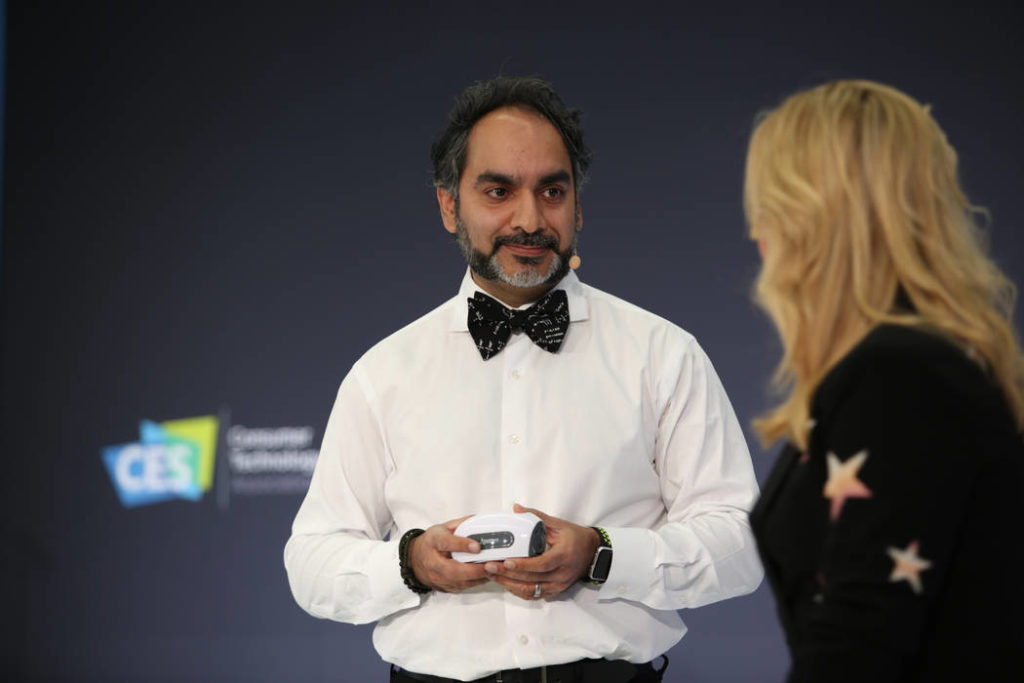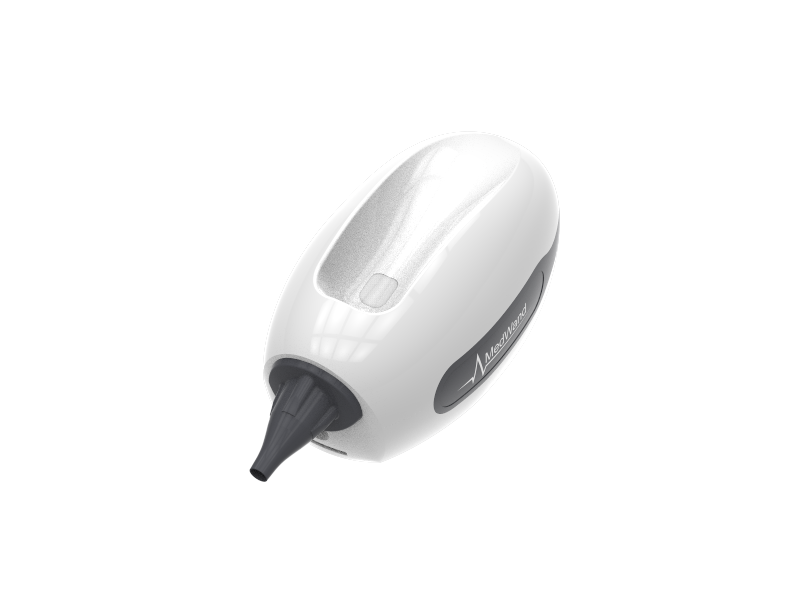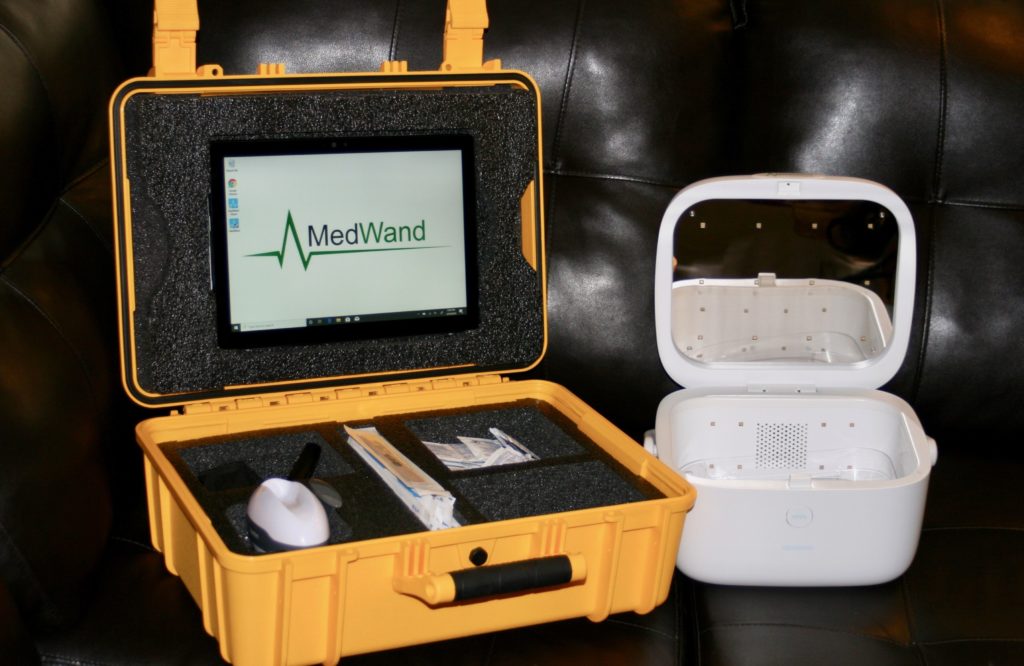Technology plays a vital role in our lives. But it feels particularly critical during this pandemic. Technology has enabled us to cling to a fragment of normalcy in a time that few of us have any reference for. It has connected us to the outside world, our friends and our families. It has allowed for dinner parties to continue, for movie nights to remain a shared experience, for food and medical supplies to arrive at our doorsteps and, for some, to continue working from home. But it can’t replace everything – and MedWand knows it well.
If we become sick, a doctor visit may be essential. However, by sitting in a waiting room in our current climate, we risk spreading a virus that is killing thousands or indeed catching it ourselves. The advent of telemedicine in recent years sought to grant patients access to medical care and expertise quickly, efficiently and without the need to travel. But this technology has its limitations and MedWand is seeking to address these limitations.
How A Family Phone Call Inspired An Idea

The roots of telemedicine extend beyond our modern devices. Calling a doctor and describing your symptoms can be enough in some cases to determine whether a person requires antibiotics or a trip to the doctor’s office. But with modern phones, specifically their microphone and camera functions, doctors could see their patients and determine certain physical ailments across great distances. Yet they are not without their restrictions.
The founder and CEO of MedWand, M. Samir Qamar, MD, is well acquainted with these restrictions. “It always bothered me as a physician, because if you came into my office with a sore throat and a cough, you would at the very least expect me to look at your throat – to look at lesions on your tonsils, maybe even get your temperature, listen to your lungs to get your oxygen levels.”
While conducting research for Google regarding telemedicine, Dr Qamar noticed the speed with which it was being adopted in the US. “There were four very large companies in the US, all venture-capital-funded that were just growing and growing: Teladoc, MD Live, American Well and Doctor on Demand.” These companies were strictly video-based, which became the accepted standard. While this technology has certainly helped millions of patients, numerous calls result in a face-to-face followup.
One evening, a family member called Dr Qamar from Chicago (he is based in Las Vegas). She described a sharp pain in her lungs every time she took a deep breath. Could it be bronchitis? Could she be suffering from pneumonia? Is a hospital visit required? He would have liked to have given an accurate answer, but without listening to her lungs he was unable to tell. So, she took her iPhone to her chest, pressed it hard against it and took some deep breaths. “And lo and behold, I actually could hear some wheezing.” With this information, he was able to prescribe antibiotics. He was also extremely intrigued by the technology’s capabilities. So, he took apart an iPhone and examined its microphone. This was the start of the MedWand device.
MedWand: The Telemedicine Support Device

Dr Qamar came together with a medical engineer by the name of Bob Rose to create MedWand in 2014. Their combined expertise seeks to improve telemedicine for people around the world. With a small device that fits in the palm of your hand, patients can have numerous vital signs recorded and uploaded onto a computer, allowing doctors to remotely receive diagnostic information that, prior to this, could only be done in person. With this device in your home or in an office, you will be able to send a doctor – via a telemedicine platform of your choosing – a plethora of information. Here’s what it can do:
- It can listen to your heart, measure your heart rate and conduct an EKG
- It can listen to your lungs and measure your respiratory rate
- It measures blood oxygen levels
- It can take your temperature
- It can listen to your abdomen
- It can look inside your nose, throat, mouth and ears to detect all manner of irregularities
- And it can inspect your skin for any abnormalities
With these features, the device was originally targeted towards businesses. MedWand’s b2b approach was particularly popular with insurance companies as – at least in the US where healthcare is privatised – it was far cheaper to have people test themselves with a device that cost $399 than sending them to the hospital. This approach was designed to have telemedicine slowly percolate into society over time. Gradually, potential customers would come to realise the value of telemedicine and begin to adopt it more readily.
“[And] then something happened called coronavirus and changed everything. We were forecasting that telemedicine for consumers may be adopted on a wider scale three to five years from now. Well, it’s been adopted. Everyone wants telemedicine, nobody wants to be exposed to this dreadful virus. And so we have moved up our timeframe to consumers.”
MedWand and the Coronavirus

MedWand was in the process of filing for FDA approval for its standard device weeks before the Covid-19 outbreak. However, with coronavirus spreading around the globe, they realised they were in a unique position to help. “So, we filed for another program under the FDA called the EUA, the Emergency Use Authorisation which allows tech companies and medicines and so forth that have not gone through the entire process yet to get approved now for emergency use. […] So, to get that kind of approval, you have to show that you can make a dent in this pandemic.”
In the wake of the coronavirus emergency, MedWand Solutions has shifted all its manufacturing and support resources worldwide to a device called the SQM-DOC (Screening Quarantine Monitor, Digital Onsite Clinic). The kit comes in a ruggedized hard case which contains the MedWand device, a UV sanitation device, a two-in-one touch screen tablet, wooden tongue depressors and more. This sanitiser can de-germ devices used in healthcare facilities to reduce the spread of the virus. It also comes with a high-powered laptop featuring a hybrid-powered Intel chip. If this technology is approved, MedWand will be able to distribute it throughout the world.
The Future of Telemedicine
In my conversation with Dr Qamar, I asked him how he saw the future of telemedicine changing as a result of the spread of the coronavirus.
“[We] believe that now, people got a huge wake-up call when it comes to germs, they got a very harsh education on biological hazards. And you will find a greater acceptance now in society for the consumerisation of telemedicine than ever. And, I dare say, we’re never going to be the same again as a people, as a society, as a world. And you’re going to start seeing more requests for something like this because people are going to be hesitant to go to the doctor’s offices for a long time.”
If Covid-19 has moved the needle with regards to the adoption of telemedicine, the future of healthcare is going to look very different. Once we emerge out the other side of this pandemic, visits to the doctor may only be necessary for that which cannot be done online. Practises around the world would transform as populations became more familiar with telemedicine alternatives and more willing to adopt them. The impact coronavirus will have on our way of life is yet to be seen. But from this challenge, we may see more secure and ultimately healthier transformations as a result – something worth looking forward to in these difficult times.
Source: MedWand.com


